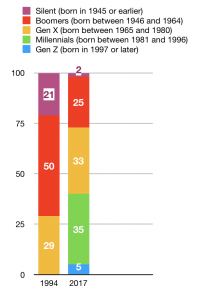 According to Gartner AI promises to be the most disruptive class of technologies during the next 10 years (1). Wildix was among the first UC&C vendors to embed Artificial Intelligence capabilities into their communication platform back in 2017.
According to Gartner AI promises to be the most disruptive class of technologies during the next 10 years (1). Wildix was among the first UC&C vendors to embed Artificial Intelligence capabilities into their communication platform back in 2017.
Wildix calls this set of features “Wildix Business Intelligence,” or simply, WBI. Users of a Wildix System can already benefit from the following services:
Text-to-Speech (TTS)
Text-to-Speech service generates a sound file the moment a call is placed. You just have to write down a text—the moment a call is generated, this text is converted into speech. Audio files can be created in different languages using different female and male voices.
With channel variables, such as ${CALLERID(name)}, it is possible to create interactive voice responses. For example, make the system pronounce a welcome message that includes the caller name.
In the same way, a caller can be informed of the callee’s user status information using TTS. Example: “user status “do not disturb” — “in a meeting,” “user will be available in 45 minutes”.
Dial by name using Automatic Speech Recognition (ASR)
Auto-Attendant feature allows callers to browse the telephone directory using just their voice. Thanks to Automatic Speech Recognition, callers can say the name of the person they would like to get in touch with, and the system puts them in contact with the desired extension.
Speech-to-Text (STT)
STT feature transforms speech into text, enabling users to read their Voicemails at any time, as if they were simple emails. This can be especially useful during a meeting, when users have no opportunity to listen to their mailbox.
Transcription of call recordings and conference recordings is coming soon, allowing users to prepare a written summary of a meeting or a phone conversation within minutes.
Worldwide phonebook
This feature provides access to the global caller name lookup service and performs the search in online resources. Thus, allowing the companies to always know who is trying to contact them, whether it is a call from a contact who is not present in the enterprise phonebook, or… a scam call.
Why our customer needs Artificial Intelligence?
The ability of machines to perform tasks which normally required human intelligence, and to learn from experience (Machine Learning), naturally generates a mixed feeling of excitement and fear. To understand the increasing importance of AI, let’s first analyze who our customer is today and what kind of customer we will face tomorrow.

Talking about the B2B telecommunications market, our customer is, in fact, a company. Behind each company there are people—those who make decisions to buy from you or from your competitor, those who interact with you on the phone, those who make orders and pay invoices, and those who decide whether to buy from you again.
To start with, these are not the same people we saw five or ten years ago. According to Pew Research Center (picture 1), more than a third of the US workforce today, are Millennials. The percentage of Millennials will continue to increase in the years go come, while the new generation (Gen Zers, born after late 1990s) have already joined the workforce.
Now let’s take a closer look at these emerging generations, their purchasing behavior, decision making process, and, more importantly, their expectations in terms of Customer Experience.
Five years ago you still had to convince your customer to opt for VoIP. This is now out of question for the emerging generations. For them, technology has always worked; they take it for granted. Imagine—many of them don’t know what Dial-up Internet is.
Another trend about these emerging generations—they love to self-serve. If they have a problem or question, they are more likely to look at online resources first, rather than call you. However, if they do contact you, they expect an IMMEDIATE response. Not tomorrow, not in one hour, but now. In fact, they often know more about you than your sales guy does before they actually contact you. First, they look at open resources; they read blogs, social posts and feedback. They are very likely to leave some type of feedback about you, too.
This is where the Artificial Intelligence comes into play:
- Humans alone simply cannot operate at speeds that today’s customer expects them to. The goal of AI is not to replace humans, but to augment human capabilities, provide a quicker response to more customers at a time and increase the number of interactions.
- Artificial Intelligence helps you deliver an effortless experience. With AI, customers can easily find and access the information and resources they need. Today’s customers do not require much of a human touch—they love to self-serve.
- An ideal combination is AI and a human operator, ready to intervene. In this way, companies can decrease the waiting time for their customer and make sure their call agents spend less time on routine operations and routine call activities.
As you can see, the main goal of Artificial Intelligence is to allow businesses to significantly automate and streamline their daily processes and communication.
(1) © Gartner: Christy Pettey, “Gartner Says Global Artificial Intelligence Business Value to Reach $1.2 Trillion in 2018”, 2018